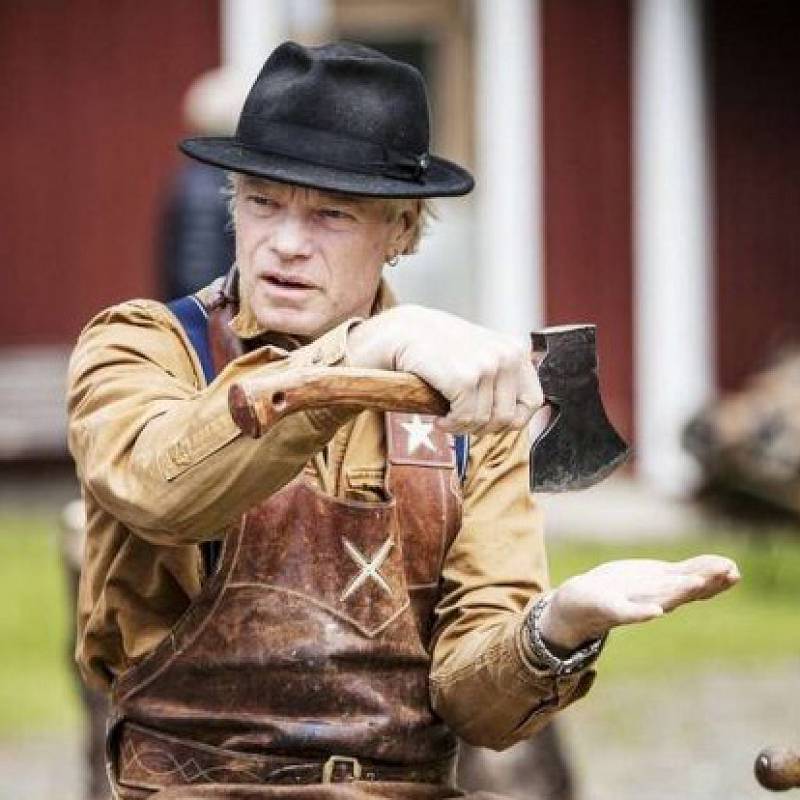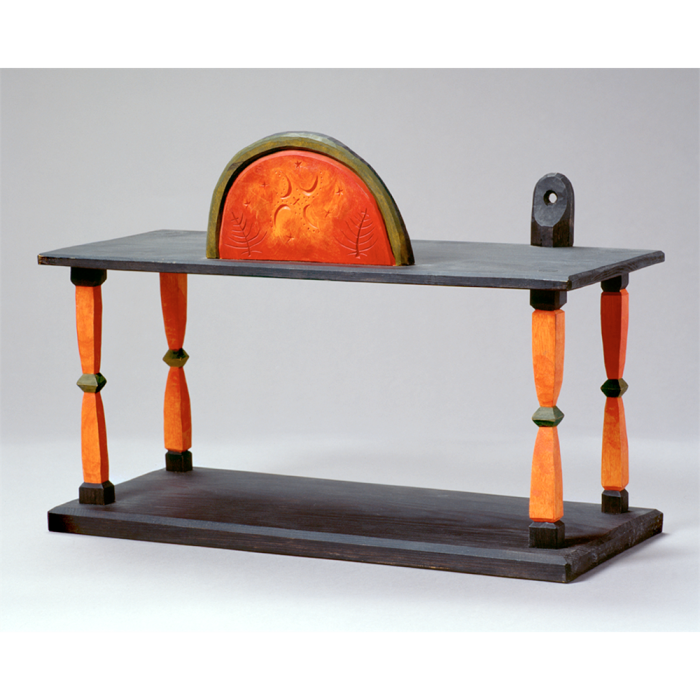
Jögge Sundqvist

Swedish artist Jögge Sundqvist is a craftsman, artist and author. He refers his art as sloyd and is influenced by 17th century Swedish folk art. Working mainly with freshly harvested wood, he creates stools, chairs, cupboards and spoons and often uses crooked and bent wood to make his objects. He uses traditional hand tools and equipment such as axes, knives, and drawknives and prefers working with the shaving horse. All surfaces are carved and painted with artist oil colour, reflecting both a sense of folk art motifs and contemporary expressions all at the same time. Since the age of 4 he learned using the knife and the axe from his father and Swedish traditional woodworker, Wille Sundqvist. Jögge was educated at the fine woodcraft Vindeln folk school 1982-84, located in Sweden’s Umeå region. While working as a craft consultant in the region of Västerbotten between 1988-99, Jögge pursued his own interest in owning a professional small business. In 1999 he developed s u r o l l e, a company based from his home where he makes fine craft, teaches and write books. Within the international traditional craft world, Jögge is perhaps best known for his published book, Slöjda I Tra. He is also an instructor at the acclaimed Swedish fine handcraft school, Sätergläntan. According to Jögge Sundqvist, the word sloyd best conveys the world of traditional hand crafts in the Swedish tradition. It has many meanings, some almost contradictory. The simple definition is “handcraft.’ But in Scandinavia there was a sloyd movement that was an adjunct to country religion and also a pedagogical curriculum in the primary schools. Jögge says that the root meaning refers to “a country guy who is clever and resourceful using basic tools and natural, available materials.”
